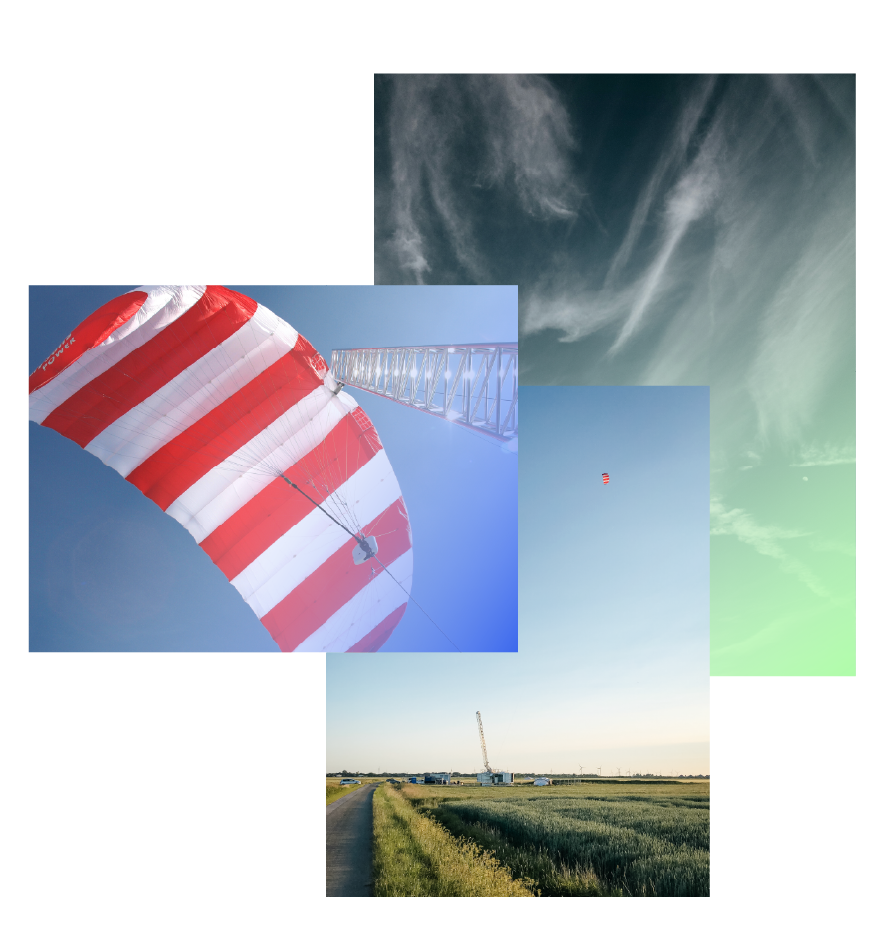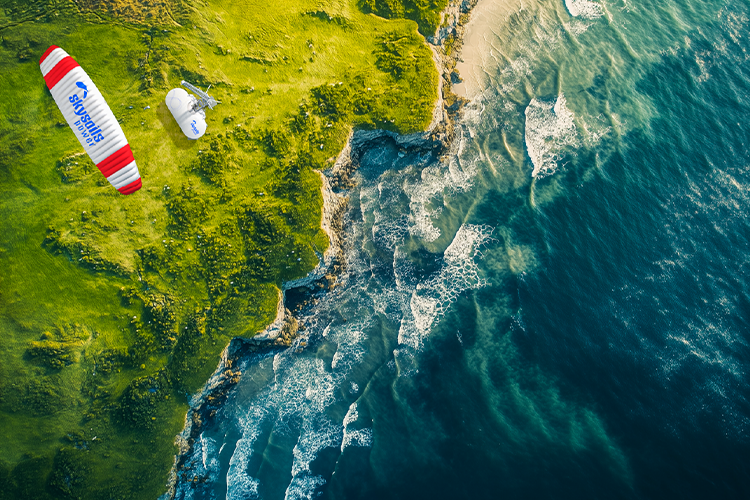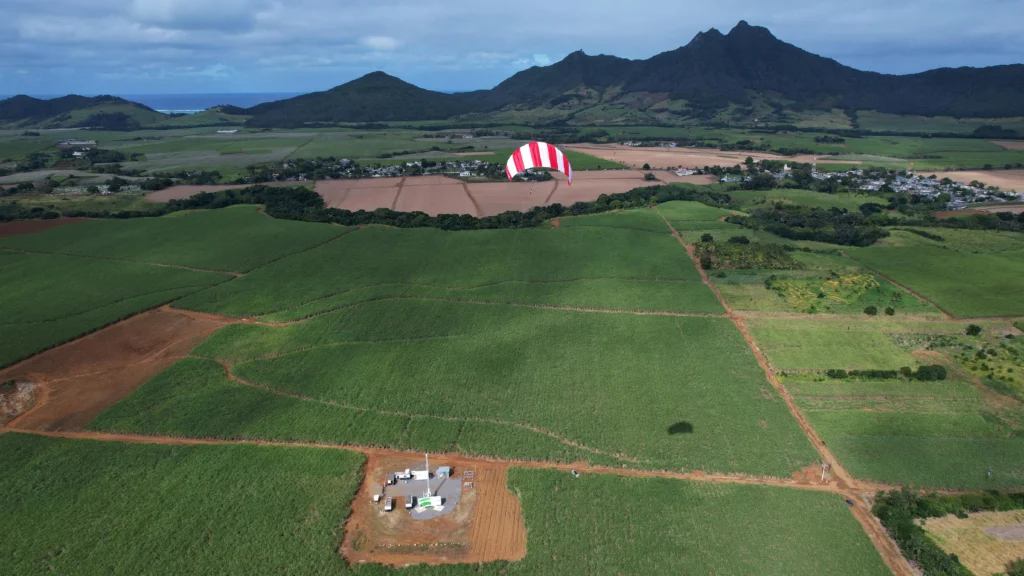How our smart kites are taking renewable energy to new heights.

Flying in a figure-eight pattern, our kites generate maximum lift and tensile force. As they climb, they pull a tether from a ground-based winch, which spins a generator to produce electricity.
Once the tether is fully extended, the kite dives back using minimal energy, rewinding the ether. Then the cycle starts again — a clean, continuous loop of airborne power, like a high-tech yo-yo in the sky.
Tap the digits for more information
Our kites capture the high-altitude winds to generate energy. They are made of high-performance textiles to ensure their durability. Air intakes and air brakes allow changing the aerodynamic profile during start, operation, and landing. Steering lines connect the kite’s canopy to the control pod below. A line system inside the canopy allows reefing it for storage.
The brain of our system: The control pod ensures optimal and secure flight for continuous, efficient energy generation. It contains the autopilot system that steers the kite. Several installed sensors continuously measure all relevant signals. It is powered by a ram air turbine.
The tether connects the control pod and the winch inside the ground station. It is made of HMPE and specially developed for applications with a high demand for safety (e.g., cranes and lifts).
A reliable and flexible launch and landing system is required to safely launch and land the power kite. The mast can be lowered to attach or unmount it completely.
The compact design of our ground station makes it easy to transport and quick to install. It contains the winch with generator & gearbox, control cabinets, inverter, and the energy storage system.
The whole system stands on a simple three-legged steel structure mounted on small concrete plates. A yaw system corrects the ground station’s alignment with the wind direction.
Our kites capture the high-altitude winds to generate energy. They are made of high-performance textiles to ensure their durability. Air intakes and air brakes allow changing the aerodynamic profile during start, operation, and landing. Steering lines connect the kite’s canopy to the control pod below. A line system inside the canopy allows reefing it for storage.
The brain of our system: The control pod ensures optimal and secure flight for continuous, efficient energy generation. It contains the autopilot system that steers the kite. Several installed sensors continuously measure all relevant signals. It is powered by a ram air turbine.
The tether connects the control pod and the winch inside the ground station. It is made of HMPE and specially developed for applications with a high demand for safety (e.g., cranes and lifts).
A reliable and flexible launch and landing system is required to safely launch and land the power kite. The mast can be lowered to attach or unmount it completely.
The compact design of our ground station makes it easy to transport and quick to install. It contains the winch with generator & gearbox, control cabinets, inverter, and the energy storage system.
The whole system stands on a simple three-legged steel structure mounted on small concrete plates. A yaw system corrects the ground station’s alignment with the wind direction.

Setting new standards: Kyo was developed for regions with high energy requirements. The scalable and autonomous system achieves an annual energy output of up to 1,780 MWh with kites of up to 450 m² wing surface area.

A new approach to high-altitude wind power: Venyo harnesses the power of high-altitude winds with speeds of 13 m/s and a continuous output of up to 200 kW. Compact design with few components and digitally monitored performance. The smart solution, even for remote islands.

Channeling the wind, amplifying its power.
up to 1 MW
17 m/s
Onshore IEC I C
To provide you with the best possible experience, we use technologies such as cookies to store and/or access device information. If you consent to these technologies, we may process data such as browsing behavior or unique IDs on this website. If you do not give or withdraw your consent, certain features and functions may be affected.